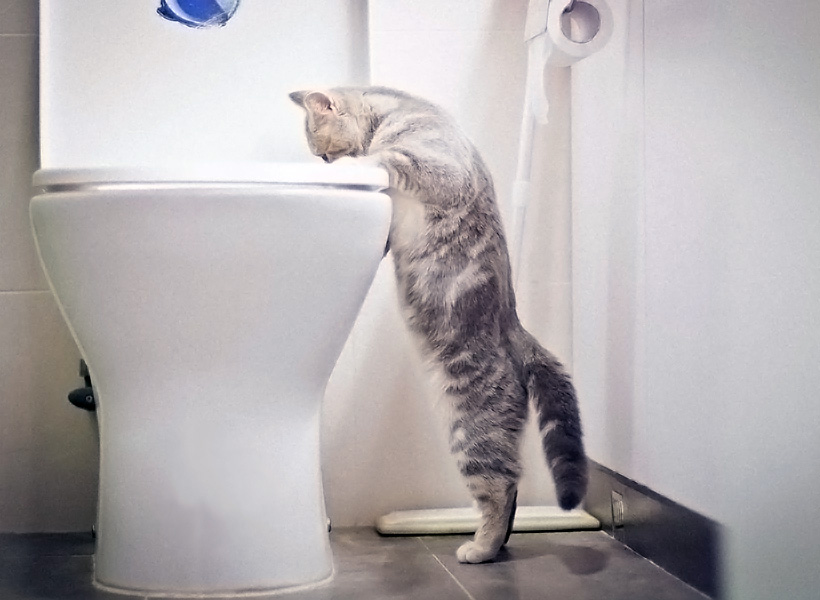Never Flush Cat Poop Down Your Toilet - Protect Your Pipes System
Never Flush Cat Poop Down Your Toilet - Protect Your Pipes System
Blog Article
Presented here in the next paragraph you can locate a good deal of outstanding tips when it comes to Don’t flush cat feces down the toilet.

Introduction
As feline owners, it's important to bear in mind how we take care of our feline friends' waste. While it might seem hassle-free to flush feline poop down the commode, this method can have harmful consequences for both the environment and human health.
Ecological Impact
Flushing feline poop presents dangerous microorganisms and bloodsuckers right into the water supply, positioning a significant risk to water environments. These contaminants can adversely influence aquatic life and concession water quality.
Wellness Risks
In addition to ecological issues, purging feline waste can additionally posture wellness threats to human beings. Cat feces may include Toxoplasma gondii, a bloodsucker that can trigger toxoplasmosis-- a possibly serious illness, specifically for expectant women and people with damaged immune systems.
Alternatives to Flushing
Fortunately, there are more secure and much more liable ways to throw away pet cat poop. Consider the following options:
1. Scoop and Dispose in Trash
One of the most typical technique of disposing of pet cat poop is to scoop it right into an eco-friendly bag and throw it in the garbage. Make certain to make use of a committed litter scoop and deal with the waste quickly.
2. Usage Biodegradable Litter
Select eco-friendly cat litter made from materials such as corn or wheat. These trashes are environmentally friendly and can be securely disposed of in the garbage.
3. Bury in the Yard
If you have a yard, think about burying pet cat waste in an assigned area away from vegetable yards and water sources. Be sure to dig deep sufficient to stop contamination of groundwater.
4. Install a Pet Waste Disposal System
Invest in a pet dog garbage disposal system especially created for cat waste. These systems utilize enzymes to break down the waste, decreasing smell and environmental influence.
Conclusion
Liable animal possession extends beyond supplying food and shelter-- it also includes appropriate waste administration. By avoiding flushing feline poop down the commode and selecting alternative disposal techniques, we can decrease our ecological impact and protect human health.
Why Can’t I Flush Cat Poop?
It Spreads a Parasite
Cats are frequently infected with a parasite called toxoplasma gondii. The parasite causes an infection called toxoplasmosis. It is usually harmless to cats. The parasite only uses cat poop as a host for its eggs. Otherwise, the cat’s immune system usually keeps the infection at low enough levels to maintain its own health. But it does not stop the develop of eggs. These eggs are tiny and surprisingly tough. They may survive for a year before they begin to grow. But that’s the problem.
Our wastewater system is not designed to deal with toxoplasmosis eggs. Instead, most eggs will flush from your toilet into sewers and wastewater management plants. After the sewage is treated for many other harmful things in it, it is typically released into local rivers, lakes, or oceans. Here, the toxoplasmosis eggs can find new hosts, including starfish, crabs, otters, and many other wildlife. For many, this is a significant risk to their health. Toxoplasmosis can also end up infecting water sources that are important for agriculture, which means our deer, pigs, and sheep can get infected too.
Is There Risk to Humans?
There can be a risk to human life from flushing cat poop down the toilet. If you do so, the parasites from your cat’s poop can end up in shellfish, game animals, or livestock. If this meat is then served raw or undercooked, the people who eat it can get sick.
In fact, according to the CDC, 40 million people in the United States are infected with toxoplasma gondii. They get it from exposure to infected seafood, or from some kind of cat poop contamination, like drinking from a stream that is contaminated or touching anything that has come into contact with cat poop. That includes just cleaning a cat litter box.
Most people who get infected with these parasites will not develop any symptoms. However, for pregnant women or for those with compromised immune systems, the parasite can cause severe health problems.
How to Handle Cat Poop
The best way to handle cat poop is actually to clean the box more often. The eggs that the parasite sheds will not become active until one to five days after the cat poops. That means that if you clean daily, you’re much less likely to come into direct contact with infectious eggs.
That said, always dispose of cat poop in the garbage and not down the toilet. Wash your hands before and after you clean the litter box, and bring the bag of poop right outside to your garbage bins.
https://trenchlesssolutionsusa.com/why-cant-i-flush-cat-poop/

I'm certainly very curious about Don’t flush cat feces down the toilet and I hope you enjoyed the blog post. Sharing is caring. Who knows, you may be helping someone out. Bless you for your time. Visit us again soon.
Click Here Report this page